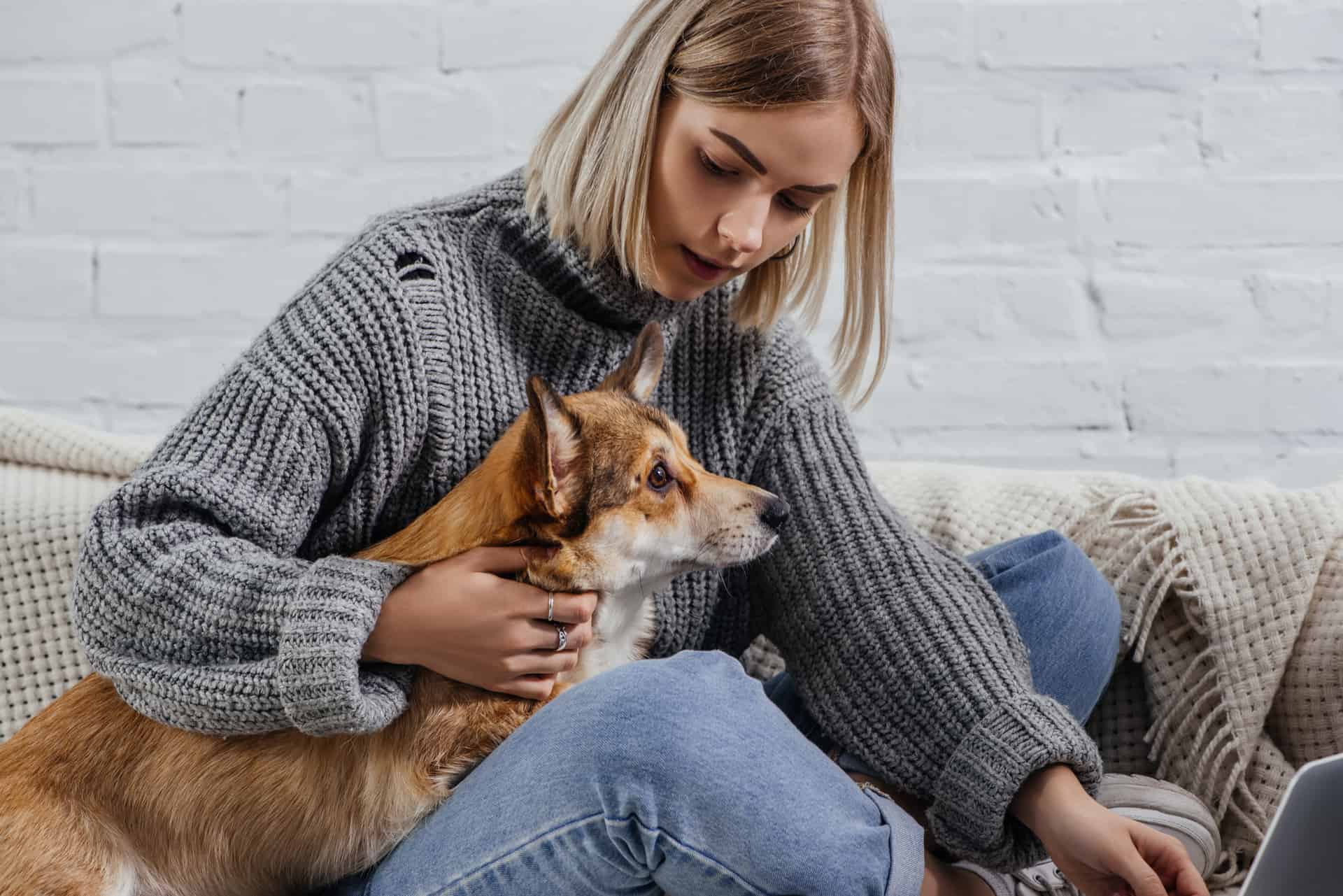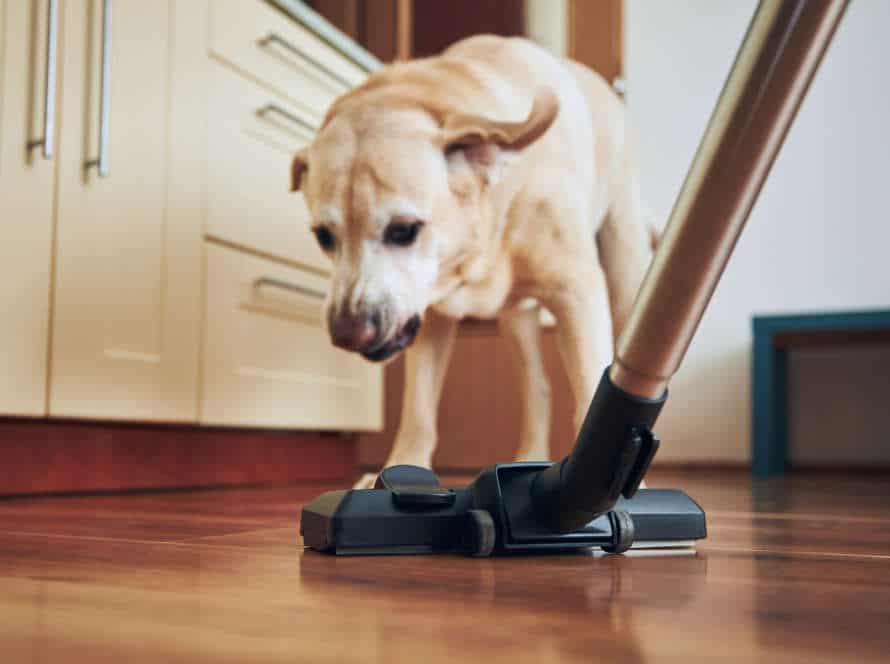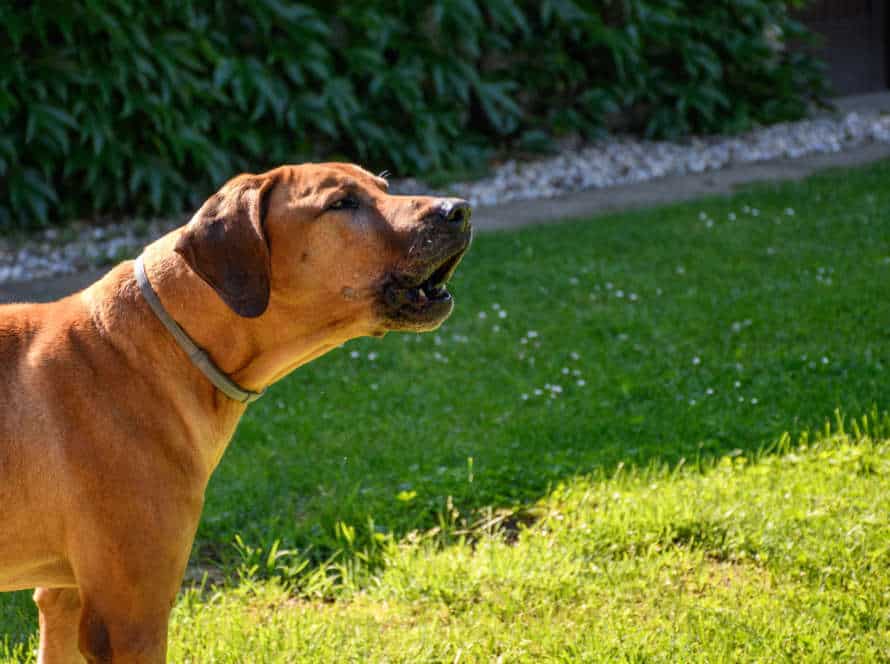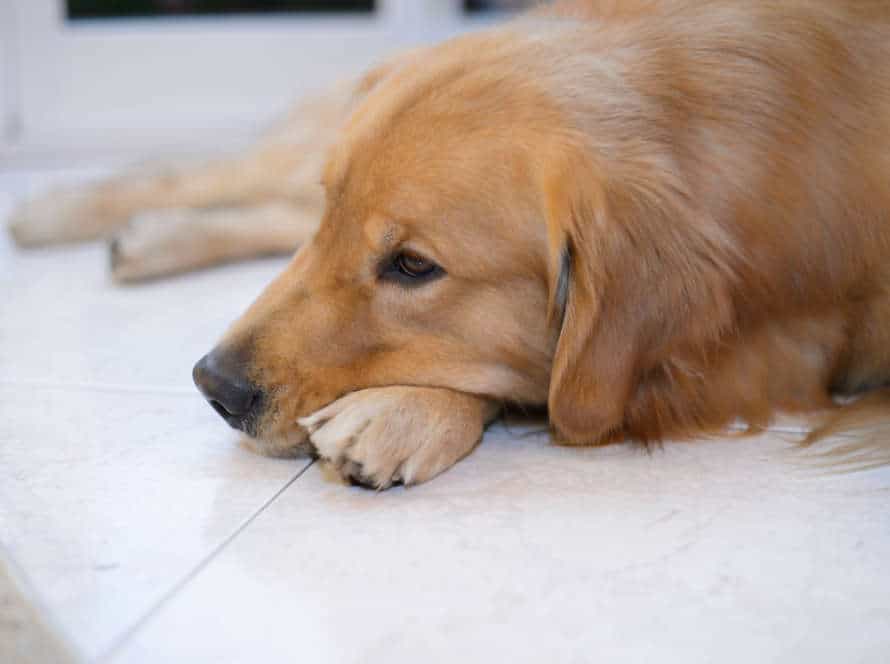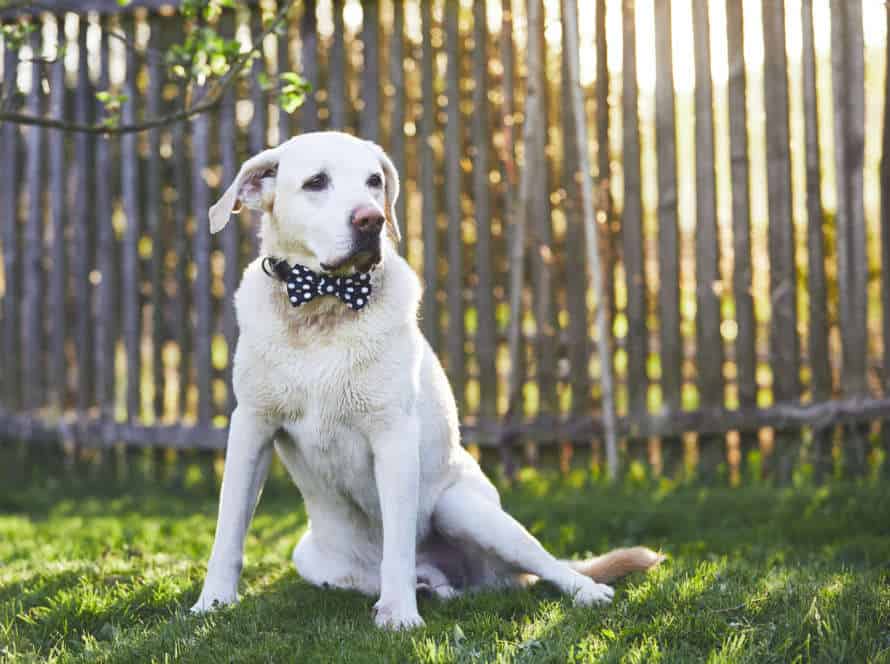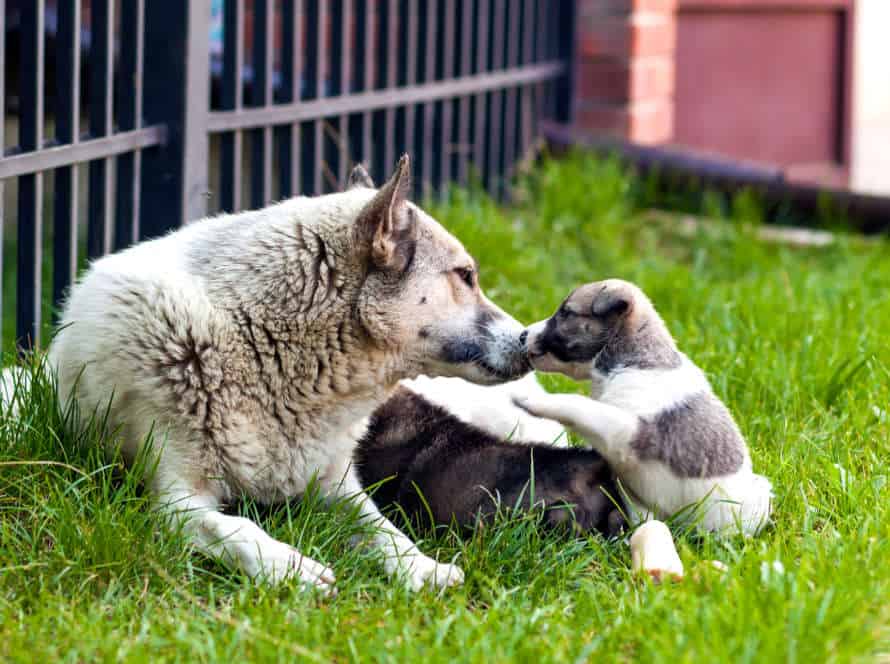The Power of Touch: Using Massage to Calm Anxious Dogs
Massage therapy is a great way to soothe anxious pups and make them feel more tranquil. Here are some tips for using massage therapy to calm your canine companion:
- Find a quiet and cozy spot for your dog to chill.
- Use gentle and slow strokes, from the neck down to the shoulders, back, and legs.
- Move in circular motions and apply mild force to help them relax.
- Concentrate on your pup’s breathing and attempt to align your movements with their breaths.
- Be mindful of your dog’s body language and tweak the pressure and speed of your massage accordingly.
Pro Tip: Consistent massage therapy can help your dog become more comfortable with being touched and can boost their overall wellbeing.
Understanding Dog Anxiety
Dogs can get anxious for lots of reasons. It could be the environment, prior experiences or feeling overloaded by their senses. It’s good to know how to spot anxiety in dogs to give them help.
Massage can help reduce their stress and have calming effects. Let’s go over how massage can help anxious pups!
Causes of Anxiety in Dogs
Anxiety in dogs can have many reasons. Identifying the root cause is key to calming your pet. Common causes of anxiety include: separation anxiety, noise phobias, past trauma, genetics, or changes in routine or environment.
Dogs show emotions through body language. Keep an eye out for signs of anxiety, such as: restlessness, panting, drooling, excessive barking/whining, destructive chewing, and aggression.
Massage therapy is a great way to soothe anxious dogs. It lowers stress, blood pressure, and releases endorphins. These promote relaxation, well-being, and trust between owners and their pets. Regular massage can help dogs overcome fears and phobias.
Signs of Anxiety in Dogs
Dogs can sense anxiety like us humans. It’s important to identify signs of anxiety in your pup. Here’re some:
- Trembling or shaking.
- Excessive barking or vocalization.
- Chewing or digging destructively.
- Panting or salivating more than usual.
- Restlessness or pacing.
- Avoidance or hiding.
- Aggression or snapping.
You can help calm your anxious pup with touch. Massage their neck, shoulders, and ears. Notice their body language and stop if they seem uncomfortable. Regular massages can help your dog relax and lessen their anxiety.
Identifying Triggers for Your Dog’s Anxiety
To help manage your pup’s anxiousness, first identify the triggers. These can be loud noises, separation from their owner, changes in routine, or strange places.
A great way to calm anxious doggies is through massage. It releases chemicals that make them feel good, like oxytocin and dopamine, which reduce their stress levels.
Here’s how to give a soothing massage:
- Start at their neck and work down the spine, using light pressure.
- Knead and massage their muscles near the spine, gradually pressing harder as they relax.
- Use gentle, smooth strokes to massage their limbs and paws, paying special attention to areas they’re tense.
Be gentle throughout and take cues from them.
How Massage Can Help Calm Anxious Dogs
Touch has a great influence on our well-being. Recently, more attention has been given to the healing power of massage for humans. But, it also has many advantages for our four-legged friends. For anxious dogs, massage can be a great aid in calming them. This article will discuss the use of massage to help anxious dogs and the different massage techniques.
The Science Behind Massage for Dogs
Massage therapy for dogs is really popular and it’s clear why. Studies show that massage can help with dogs’ anxieties. It reduces their heart rate, blood pressure and cortisol levels. It also increases serotonin and oxytocin which make them feel relaxed and content.
So how does massage work?
It stimulates the nervous system, releasing endorphins which are natural painkillers. This reduces pain and inflammation.
Massage improves circulation too. It delivers oxygen and nutrients to muscles and tissues, and removes waste.
It also relaxes your pet by reducing muscle tension and releasing hormones like serotonin and oxytocin.
When performing massage therapy on your dog, use gentle, firm strokes. Pay attention to their body language and respond accordingly.
Benefits of Massage for Anxious Dogs
Massage therapy is a natural and effective way to calm anxious dogs. It can improve their wellbeing, too! Here are some of the benefits:
- Reduces anxiety. Massage increases serotonin, which helps regulate mood. Plus, it decreases cortisol, a stress-related hormone.
- Relaxes muscles. Anxious dogs usually hold tension in their muscles. Massage can help release it & promote relaxation.
- Improves circulation. Massage raises blood flow to muscles & organs, which boosts the immune system & helps healing.
- Strengthens the bond. Massaging your dog creates trust & feelings of safety & security.
Incorporate massage into your pup’s routine for more relaxation & happiness. Pro Tip: Ask your vet before trying new therapeutic techniques.
When to use Massage for Dog Anxiety
Massage can be a great way to soothe anxious dogs. But you must know when it can help and when it won’t.
Here are times when massage can help:
- Separation anxiety: Massage can relax muscles and reduce stress.
- Thunderstorms: Massage can provide a calming touch and reduce tension.
- Fireworks: Massage can relax dogs and reduce fear.
However, massage may not be suitable for aggressive or behavioral issues. In these cases, speak to a dog trainer or behaviorist for advice.
Tip: Before massage, make sure your dog is relaxed. Don’t massage an agitated or stressed dog.
Techniques for Massaging Anxious Dogs
The power of touch is amazing! Massaging your pup can be a great way to calm their anxieties. There are many benefits for both physical and emotional health. Here, we will discuss some tips on how to massage your anxious doggo.
Let’s see how massage can benefit your furry friend!
Preparing Your Dog for Massage
Have your pup ready for a massage? Here are some tips:
- Choose a relaxing, distraction-free spot.
- Put down a comfortable mat or blanket for your doggo.
- Create a chill atmosphere with soothing music or aromatherapy oils.
- Let your pup get acquainted with the massage tools before using them.
- Reward your pup with treats or praise to stay still during the massage.
- Talk to your pup and observe their reactions.
- Be patient and understanding of their needs and preferences.
Massaging anxious dogs can reduce stress and increase their well-being. Patience, understanding, and prep are key!
Techniques for Different Types of Anxiety
Humans aren’t the only ones who can suffer from anxiety – dogs do, too! To help calm anxious dogs, there are touch-based massage techniques. Here are some for different types of anxiousness:
-
Separation Anxiety:
- Gently massage the chest and neck.
- Lightly press ears + acupressure points to soothe the nervous system.
- Use slow strokes on the back to relax.
-
Noise Anxiety:
- Place hand on rib cage and apply gentle pressure.
- Do gentle circular motions on the ears to release endorphins.
- Use Swedish/Effleurage massage strokes to relax.
-
General Anxiety:
- Speak in a soothing voice to reassure.
- Circular pressure on base of spine + ears to stimulate parasympathetic nervous system.
- Gently massage shoulders + back to reduce muscle tension.
Pro Tip: Get your dog checked by a vet to make sure there’s no medical issue causing the anxiety. Massage helps, but it’s not a replacement for medical treatment.
Areas of Focus During Dog Massage
Massaging an anxious pup? There are specific areas to focus on that’ll help soothe ’em. These areas have lots of nerve endings, which respond well to touch therapy.
- Shoulders: Begin with gentle circles on their shoulders, to loosen any tension in the upper body.
- Neck: A gentle neck massage can ease tension in the jaw, and relax them.
- Ears: Massaging the base of their ears can reduce anxiety and stress.
- Spine: Gently rubbing circles on the spine helps release tension & relax.
- Hind legs: Massaging the hind legs helps with circulation and de-stressing.
When massaging, take it slow and follow the dog’s lead. If they need to stay still, let them.
Pro tip: Use lavender essential oil to further relax them during massage.
Other Strategies for Managing Dog Anxiety
Massage can help a jumpy dog to chill out; however, it’s not always the top way to manage dog anxiety. Here, we’ll talk about other approaches, such as natural remedies, desensitisation, signals that signal calmness and more. All these can help to soothe your pup.
Creating a Calming Environment for Your Dog
Dogs can be anxious, just like us humans. To help this, create a calming environment and try massage. Here’s how:
- Find a quiet space where your pup can relax.
- Start with a gentle stroke on the head and neck.
- Move in slow circles from head to tail and massage their muscles.
- Focus on areas that tend to be tense, such as the neck, shoulders, and hips.
- Press gently but firmly, taking care to respond to your pup’s reactions.
- A massage session should last 15-20 minutes, daily or as needed.
Crazy Bonus Tip: Talk to your dog in a soft, gentle tone while massaging them to make it even more calming.
Using Aromatherapy with Dogs
Aromatherapy can be effective for managing dog anxiety. Lavender, chamomile, and ylang-ylang essential oils are safe for use. Diffuse them or apply a small amount to a collar or bandana.
Massage therapy is also useful. Dogs respond positively to touch, and massage can help reduce stress levels.
Tips for using massage:
- Slow, gentle strokes with firm but gentle pressure.
- Circular motions on chest and shoulders, long sweeping motions on back and legs.
- Use tips of fingers to target specific areas, like base of neck or temples.
- Allow the dog to guide you and respond to their body language.
Aromatherapy and massage therapy together can be a natural and holistic way to reduce anxiety.
The Role of Exercise and Play in Managing Anxiety
Exercise and play are important for managing anxiety and stress in dogs. Physical activities can help release endorphins which reduce anxiety and make them feel better. Exercise also boosts confidence and develops a good relationship between dog and owner.
Touch is another great strategy for managing anxiety. Massage can help calm anxious dogs by regulating their breathing, heart rate and body tension. It also strengthens the bond between you and your pet.
A holistic approach is the best way to keep your furry one relaxed and healthy.
Pro tip: Exercise and massage can really reduce anxiety in dogs. So, take some time to spend with your pet and give them some TLC!
Conclusion: The Power of Touch and Connection for Anxious Dogs
To wrap up, massage and touch can be highly beneficial for anxious dogs. Massaging helps dogs to chill out, mentally and physically. This is because endorphins are released, which soothe stress and foster joy.
Here are a few tips:
- Create a quiet, welcoming atmosphere.
- Begin with slow, light strokes on the head, neck and shoulders.
- Then, use firm pressure as you move down their back and legs.
- Look out for signs of discomfort, agitation or pain, and stop if necessary.
- Reward your pup with treats during and after the massage to teach them to stay relaxed.
Frequently Asked Questions
1. How can massage help calm anxious dogs?
Massage can provide a calming influence on anxious dogs by promoting relaxation, reducing muscle tension, and increasing the release of endorphins that can elevate mood and reduce anxiety.
2. What are the benefits of using massage to calm anxious dogs?
Massage can help decrease stress and anxiety, improve circulation and flexibility, promote better sleep patterns, and improve overall well-being in dogs.
3. How often should I massage my anxious dog?
The frequency of massage depends on the individual dog and their level of anxiety. It is recommended to start with smaller sessions twice a week and gradually increase as the dog becomes more relaxed and comfortable with the massage technique.
4. What areas of the dog’s body should I focus on when massaging to calm anxiety?
Areas to focus on include the neck, shoulders, lower back, and hindquarters, which tend to hold the most tension in anxious dogs. However, it is important to take cues from the dog’s body language to understand where tension and discomfort may be present and adjust the massage accordingly.
5. Can I do massage on a dog who has never had massage before?
Yes, massage can still be beneficial for dogs who have never had massage before. However, it is important to introduce the massage gradually and let the dog become comfortable with the technique, as some dogs may initially be uncomfortable or uneasy with the new sensation.
6. Should I consult with a professional before massaging my anxious dog?
It is recommended to consult with a professional, such as a licensed massage therapist or veterinarian, before beginning any massage therapy on your dog, especially if they have pre-existing medical conditions. A professional can also help guide you through proper technique and ensure the massage is safe and effective for your dog.

